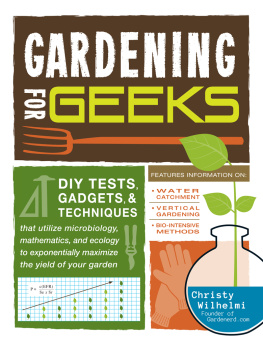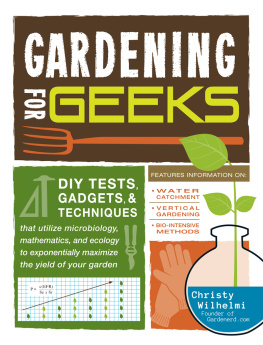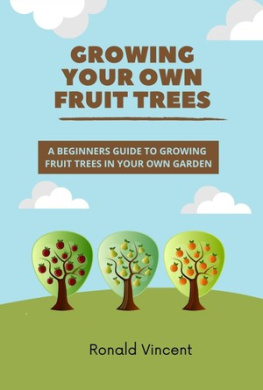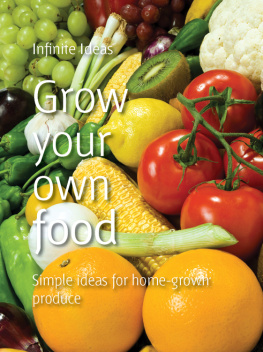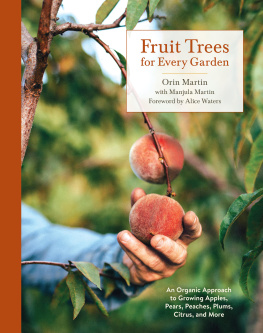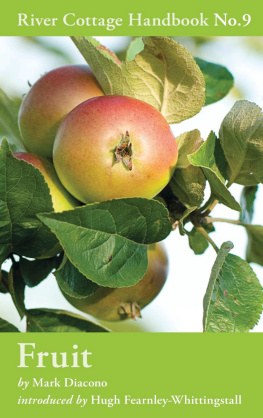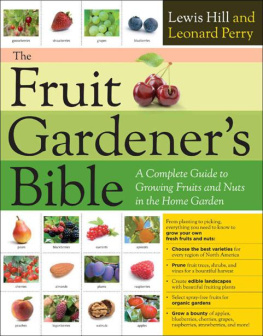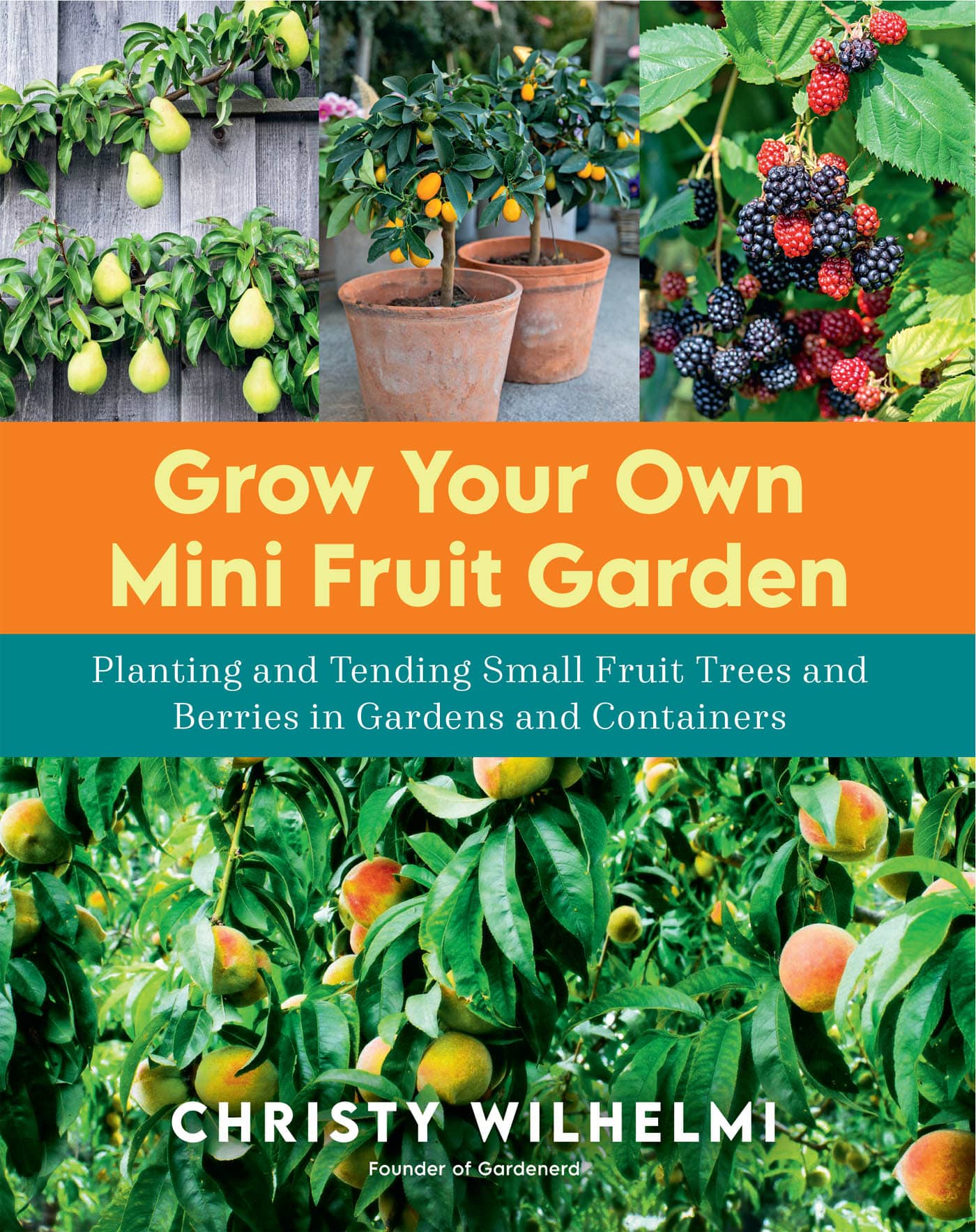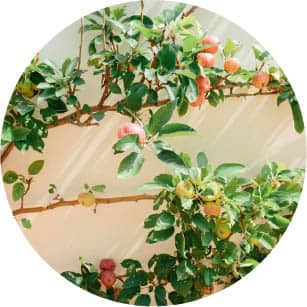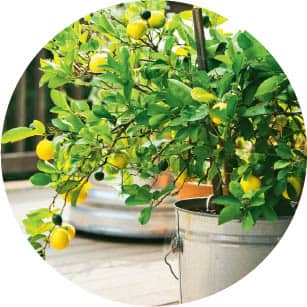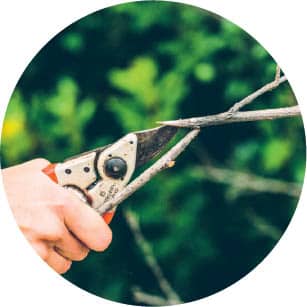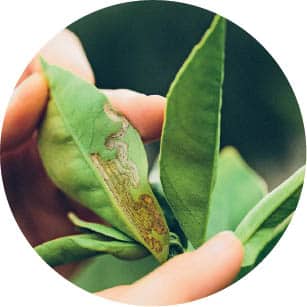Contents
Page List
Guide
Cover
GROW YOUR
OWN MINI
FRUIT GARDEN
Planting and Tending Small Fruit Trees
and Berries in Gardens and Containers
CHRISTY WILHELMI
Founder of Gardenerd
CONTENTS
Welcome to the world of small-space fruit gardening
INTRODUCTION
Congratulations on your decision to create a mini fruit garden. What lies ahead is a journey of learning, experimentation, successes, setbacks, and delicious results. This book is organized by tasks: planning and research, preparation, planting, care and tending, harvesting, pruning, and troubleshooting. Feel free to jump forward in these chapters to find the advice you need throughout your adventure. Use the index to your advantage and dont be afraid to dog-ear the pages. Get this book dirty. When youre done, youll have a new mini fruit garden to show for it.
Youll learn strategies to make the most of your small-space garden and to venture confidently into the unknown. Let the excitement propel you forward and be aware that setbacks are merely... setbacks. Your plants may die or become infested with pests; thats okay. This book will help you problem-solve and emerge victorious on the other side. Sometimes that means starting over but remember this: Failure is opportunity. Every gardener, even an expert, experiences failure. Mother Nature is always in charge, and our job is to learn to collaborate with her. Develop your observation skills and listen to nature around you. Youll see more than plants and bugs as you learn. Youll see connections between the sun and leaves, between soil and roots, and so much more. So lets begin this journey together.
CHAPTER 1
Whats a Mini Fruit Garden?
Not everyone is blessed with acres of land to cultivate and transform into a dream homestead. In fact, most arent. Most people live on a standard city lot with obstructions from nearby trees and buildings that make it challenging to grow fruiting crops. Factor in amenities such as swimming pools, play areas, storage sheds, and garages, and that doesnt leave much space to work with. With even less space to grow, apartment dwellers make up a significant part of the population, ranging from 6 percent in Mexico, 37 percent in the U.S., to 46 percent in Europe. Those in apartments and condominiums may only have a balcony or porch to utilize. Enter the mini fruit garden.
Mini fruit gardens make the most of whatever space is available. They use strategies such as backyard orchard culture, vertical gardening, multifruit grafting, container planting, espalier techniques, and biointensive methods to grow a rainbow harvest in a small space. While there are limits to what you can grow in a small space, strategic planning will help you exploit the space you have for a tasty and rewarding outcome.
Create a space where pollinators thrive, and bees will reward you with fresh fruit.
STRATEGIC PLANNING
The first step in planning your mini fruit garden is to assess your space and decide what you have room for. Lets review a few basic design strategies and observation guidelines. Grab a notepad (or graph paper if you want to make notes to scale), pencil, eraser, tape measure, and head outside.
Dont let drafting tools intimidate you. Have fun and explore the possibilities.
SKETCH YOUR SPACE
Draw the outline of your garden area, including any steps or elevation changes. Indicate walls, existing trees, and any element of the space that will remain in place, such as seating areas, barbecues, or play equipment. This will narrow your focus to the space available. Note the dimensions for this available space. This is your canvas.
FINDING NORTH AND SOUTH
Next, figure out where north is (or south in the southern hemisphere). Most mobile devices have compass apps, or you can look up your address on Google Maps. The top of the web page is always north. Once you know where north and south is, you can determine the suns path across the garden. Refresher: The sun rises in the east and sets in the west. That means the arc of the sun crosses from east to west across the south edge of the sky in the northern hemisphere (north edge of the sky in the southern hemisphere). The sun is lower in winter and nearly straight above in summer. Keep this in mind as you assess sun exposure on your garden. Draw arrows indicating north and south on your design.
TALLEST TO SHORTEST
Now that you know where north and south are, you can strategize about tree and shrub placement. The rule of thumb for sun-loving plants is to plant tallest to shortest. Fruit trees and climbing vines should sit north of shorter and trailing plants in the design. To put it simply, tall things cause shade. If you dont want shade, plant the tall stuff north of the shorter stuff. Place low-growing crops such as strawberries farthest south to ensure they will get the sunlight they need to produce fruit.


